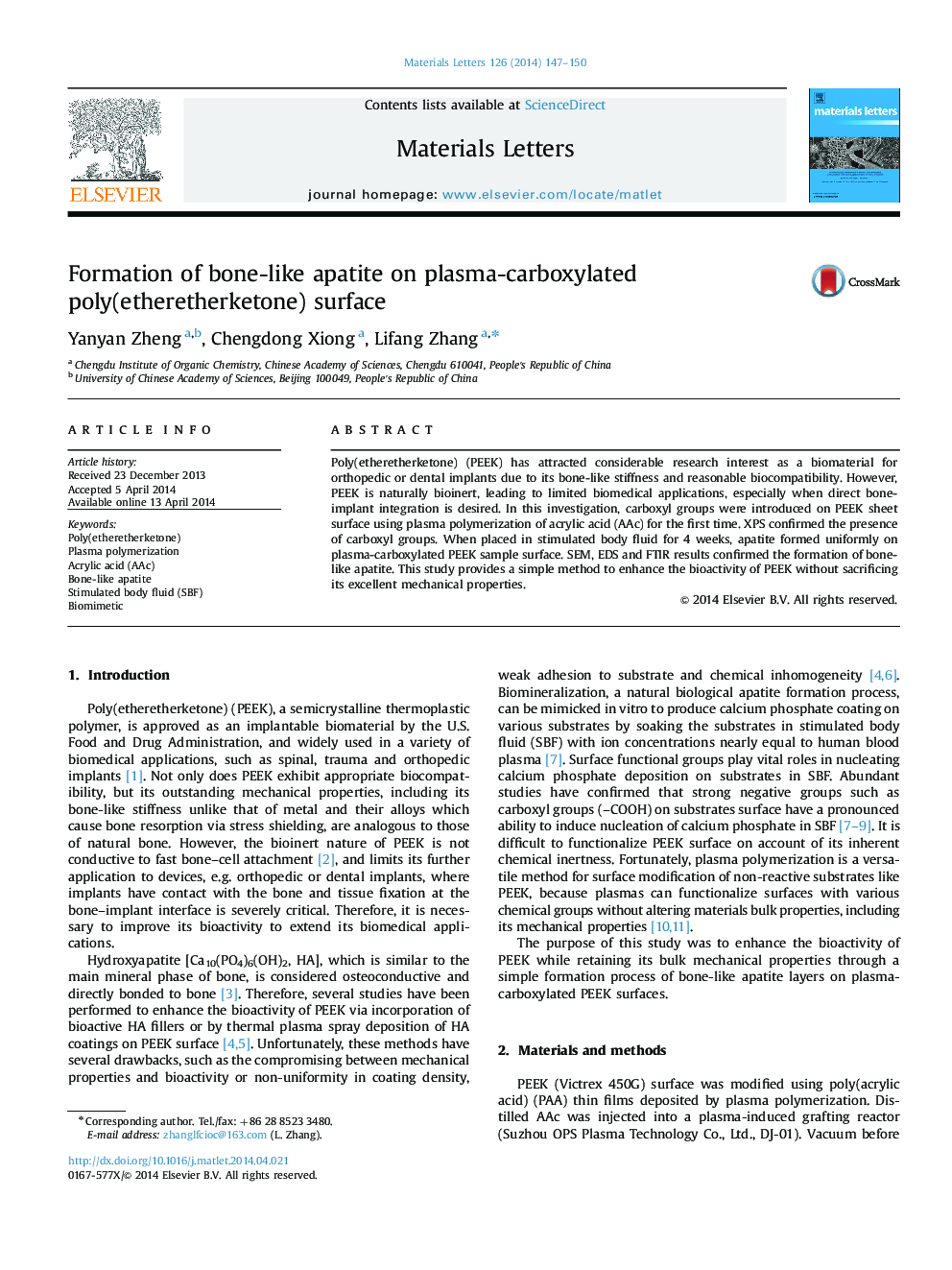| Article ID | Journal | Published Year | Pages | File Type |
|---|---|---|---|---|
| 1644235 | Materials Letters | 2014 | 4 Pages |
Abstract
Poly(etheretherketone) (PEEK) has attracted considerable research interest as a biomaterial for orthopedic or dental implants due to its bone-like stiffness and reasonable biocompatibility. However, PEEK is naturally bioinert, leading to limited biomedical applications, especially when direct bone-implant integration is desired. In this investigation, carboxyl groups were introduced on PEEK sheet surface using plasma polymerization of acrylic acid (AAc) for the first time. XPS confirmed the presence of carboxyl groups. When placed in stimulated body fluid for 4 weeks, apatite formed uniformly on plasma-carboxylated PEEK sample surface. SEM, EDS and FTIR results confirmed the formation of bone-like apatite. This study provides a simple method to enhance the bioactivity of PEEK without sacrificing its excellent mechanical properties.
Related Topics
Physical Sciences and Engineering
Materials Science
Nanotechnology
Authors
Yanyan Zheng, Chengdong Xiong, Lifang Zhang,
